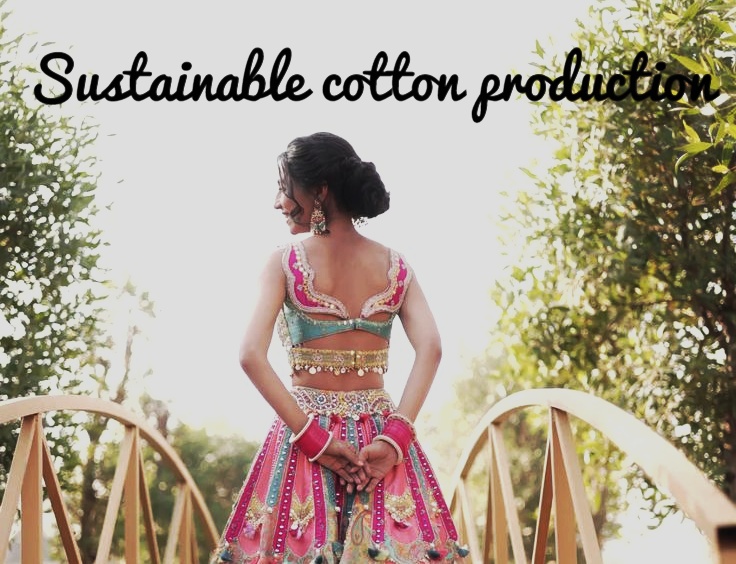Sustainable Cotton Production: Eco-Friendly Textile industry
🌍 Why Sustainable Cotton Farming Matters in Modern Fashion
Cotton is everywhere — from our clothes to our bedsheets. But traditional cotton farming is often water-intensive, pesticide-heavy, and harmful to both people and the planet. That’s where sustainable cotton production comes in. It’s not just an agricultural trend; it’s the future of responsible fashion and ethical farming.
By switching to eco-friendly cotton cultivation, we reduce the impact on the environment and empower farmers with healthier, more stable livelihoods.
🧵 What is Sustainable Cotton? Benefits of Organic & Ethical Cotton Farming
Sustainable cotton refers to cotton grown using practices that are environmentally safe, economically viable, and socially responsible.
- Water-efficient farming that reduces consumption
- Minimal or zero chemical pesticide use
- Fair labor practices and no exploitation of workers
- Improved soil health through natural composting and rotation
Organizations like the Better Cotton Initiative (BCI) and Textile Exchange are setting global benchmarks for sustainable cotton certification.

🚧 Challenges in Sustainable Cotton Production: Funding Crunch, Low Yield & Lack of Support
⚠️ 1. Low Yields in Organic Cotton Farming
Unlike genetically modified cotton, traditional or naturally coloured cotton varieties often have lower yields. This discourages many farmers from making the switch to eco-friendly practices.
💸 2. Funding Crunch for Cotton Sustainability Projects
Small-scale farmers frequently face a lack of financial support for transitioning to organic methods, buying quality seeds, or obtaining certifications. Government subsidies and institutional finance are often limited or poorly distributed.
📉 3. Market Awareness and Lack of Buyer Connectivity
Many farmers are unaware of the premium value of organic cotton in global markets. Without proper access to buyers or platforms, their cotton is sold at conventional rates, reducing motivation to grow it sustainably.
✅ Practical Solutions: How to Support Sustainable Cotton & Revive Green Practices
🌿 1. Training Farmers in Sustainable Agriculture
- Workshops on organic pest control and climate-resilient cotton farming
- Programs by NGOs and groups like Organic Cotton Accelerator
- Use of composting, intercropping, and indigenous seed banks
📲 2. Blockchain & Technology for Traceable Cotton Supply Chain
Many startups are using blockchain technology to help consumers trace the journey of their cotton. This boosts transparency, trust, and value for sustainable farmers.
🏷️ 3. Support for Organic Certification & Market Linkages
- NGOs offering financial aid for GOTS (Global Organic Textile Standard) certification
- Connecting farmers directly with ethical fashion brands
- Promotion through sustainable fashion awareness campaigns (internal link)
🇮🇳 Case Study: Revival of Naturally Coloured Cotton in India
In states like Maharashtra and Andhra Pradesh, farmers are reviving naturally coloured cotton varieties — like brown, beige, and green cotton — that require no chemical dyeing, saving thousands of liters of water and reducing pollution.
Despite low yields and poor seed availability, passionate entrepreneurs are working to reintroduce these indigenous cotton strains to the mainstream textile market.

🌱 How You Can Help: Be Part of the Sustainable Cotton Movement
- Buy products labeled GOTS Certified or BCI Cotton
- Support brands promoting organic, cruelty-free cotton
- Ask retailers about the source of their cotton
- Educate others about climate-conscious fashion
Even a simple decision like choosing an organic T-shirt over a fast fashion item can have a meaningful impact.
💬 Final Thoughts: Is Sustainable Cotton the Future of Textiles?
Absolutely. But it requires more than awareness. It needs collective effort — from policymakers to farmers, and from brands to buyers. The path is tough, but with technology, transparency, and consumer demand for ethical cotton, we’re on the road to a cleaner textile future.
📣 Call to Action: What Can You Do Today?
If you’re a fashion enthusiast, entrepreneur, or eco-conscious shopper — start making small changes. Choose ethical. Choose sustainable.
- 💬 Comment below if you support sustainable cotton farming!
- 📢 Share this article with someone who cares about the planet
- 📚 Explore our full guide to sustainable fashion

